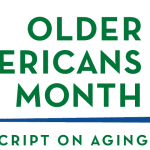Combating Osteoporosis with the Dynamic Duo: Calcium and Vitamin D
Written By: Christina Arundale, Dietetic Intern at the University of South Florida, College of Public Health
Osteoporosis is a common condition among older adults that increases the risk of bone fractures and can lead to immobilization. During your younger years, you experience a rapid increase in bone density that then slows to a halt when you reach your mid-20’s. After this, maintaining strong bones is dependent upon two main factors: diet and physical activity.
In terms of your diet, there are two key nutrients that support strong, healthy bones: calcium and vitamin D. Calcium is the most abundant mineral in your body, the majority of which is stored in bone and teeth, where it provides structure and strength. Your body can’t produce its own calcium, which is why it’s an essential nutrient in the diet. How much do you need? For older adults, the recommended daily intake ranges from 1,000-1,200 milligrams. This can easily be achieved by eating three servings of dairy.
Other sources of calcium include:
- Fortified orange juice
- Fortified soymilk
- Fortified breakfast cereal
- Tofu and beans
- Salmon
- Dark green vegetables
Vitamin D is like the sidekick to calcium. It enhances your body’s ability to absorb and use calcium so that it can better do its job of preserving bone and preventing injury. When you don’t eat enough of these two nutrients, you risk losing bone mass and developing osteoporosis. For adults over the age of 50, the recommended daily intake is 15-20 micrograms.
Good sources of vitamin D include:
- Trout
- Salmon
- Mushrooms
- Fortified dairy and non-dairy milks
- Sardines
- Eggs
- Fortified breakfast cereal
In addition to diet, it’s also important to stay as physically active as possible to support continuous bone repair and strengthening. Osteoporosis can be a debilitating condition, which is why you want to develop good exercise habits before it’s too late.










